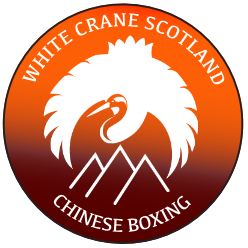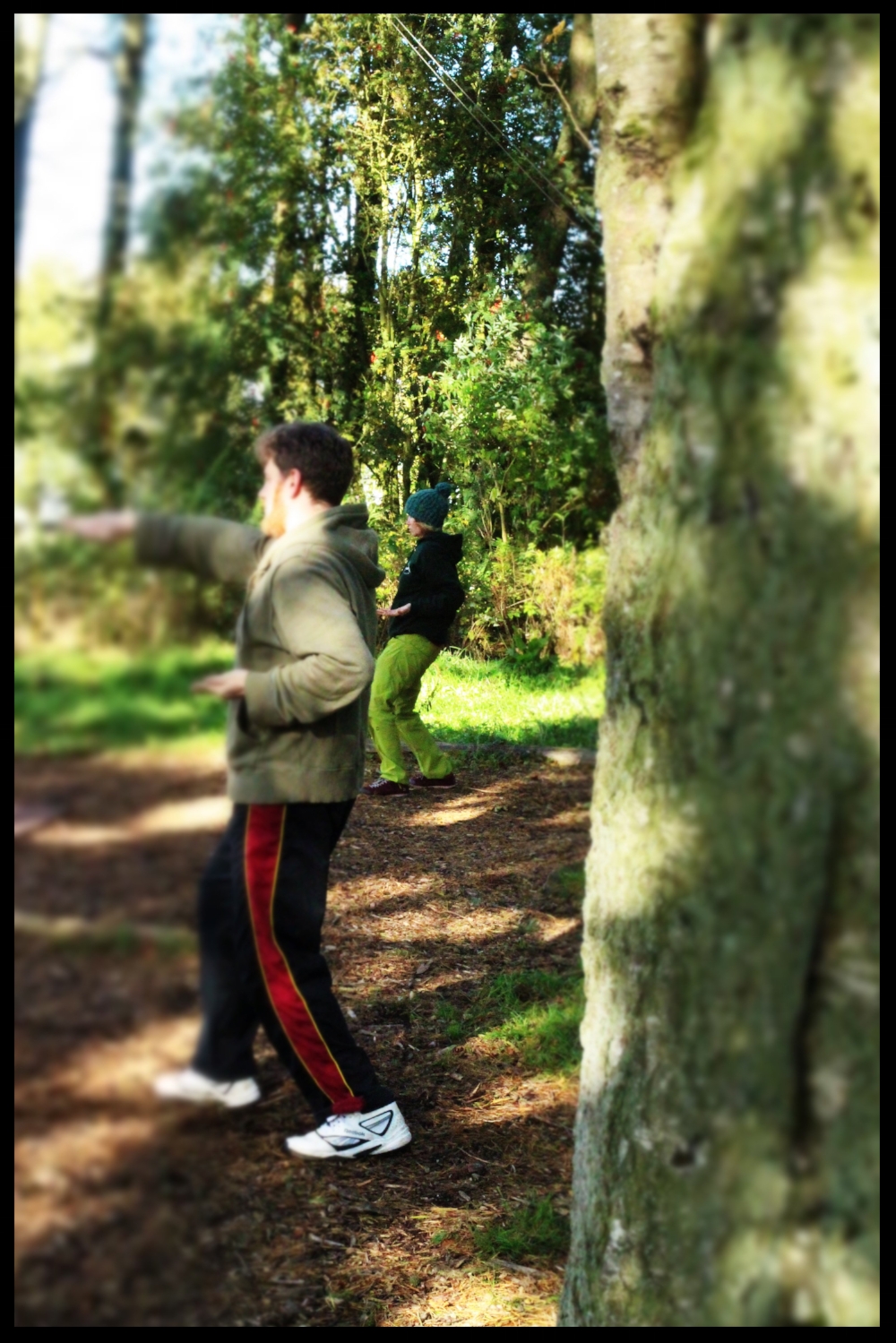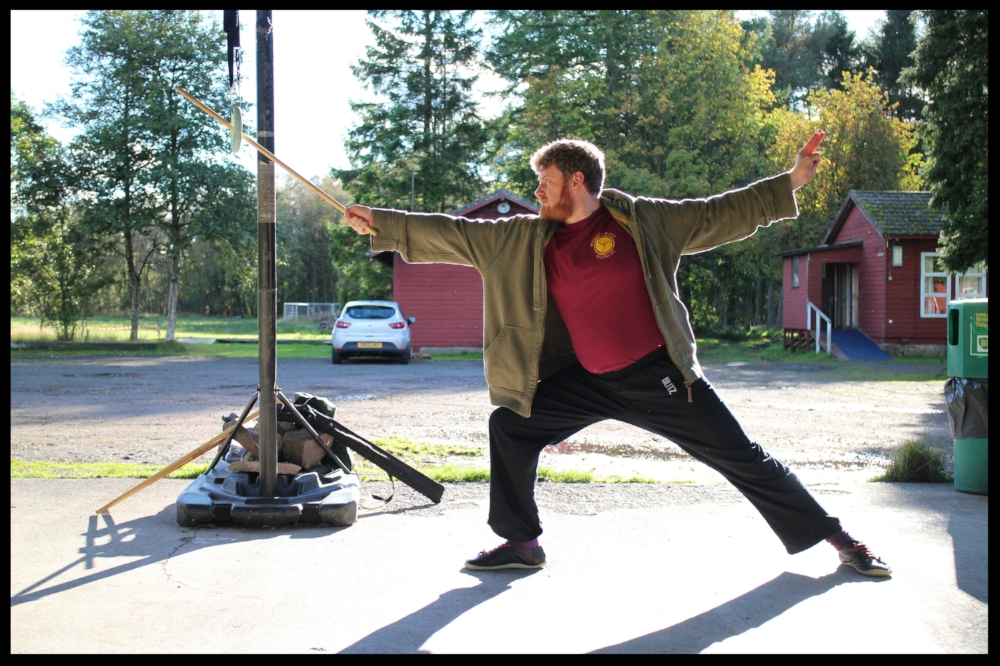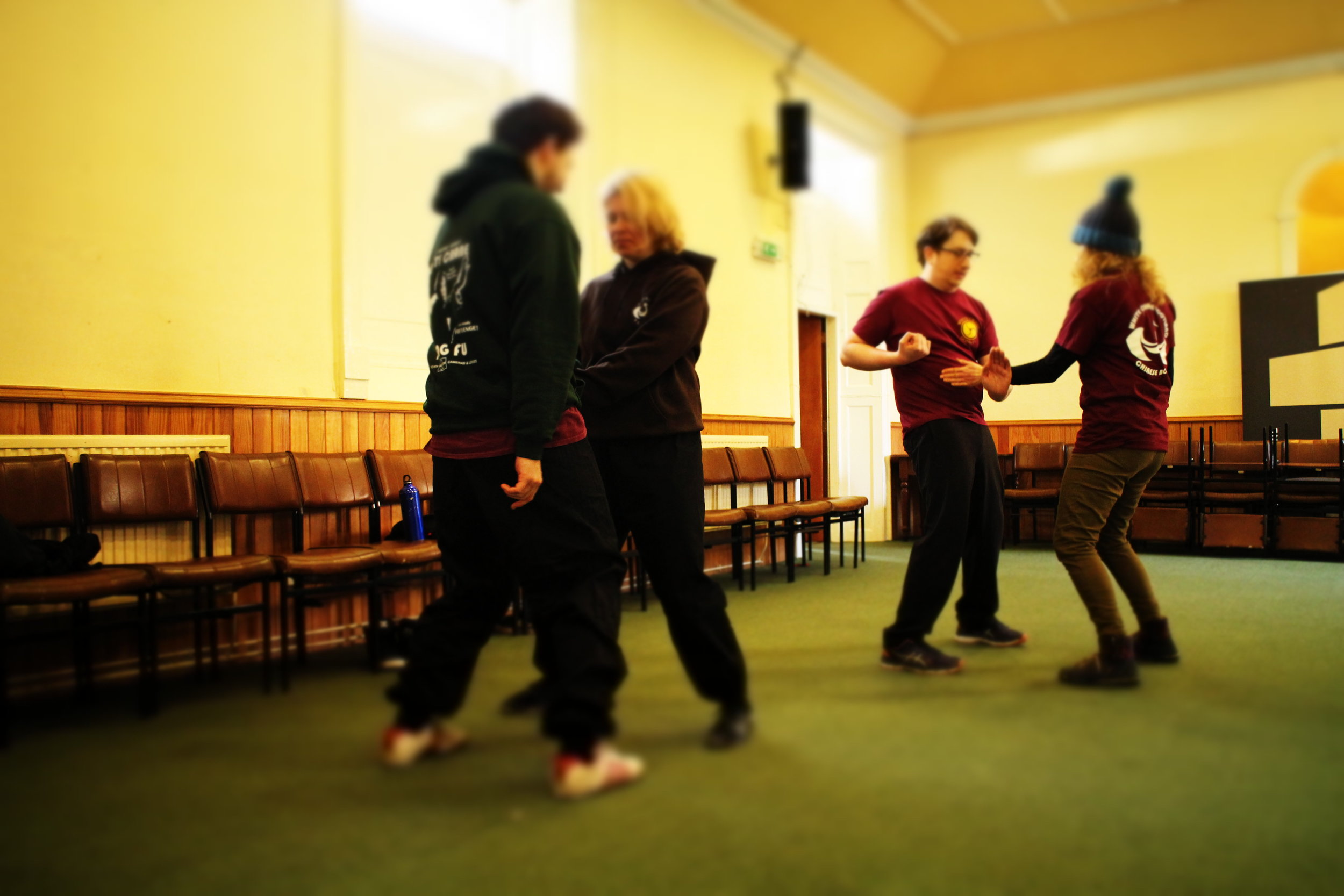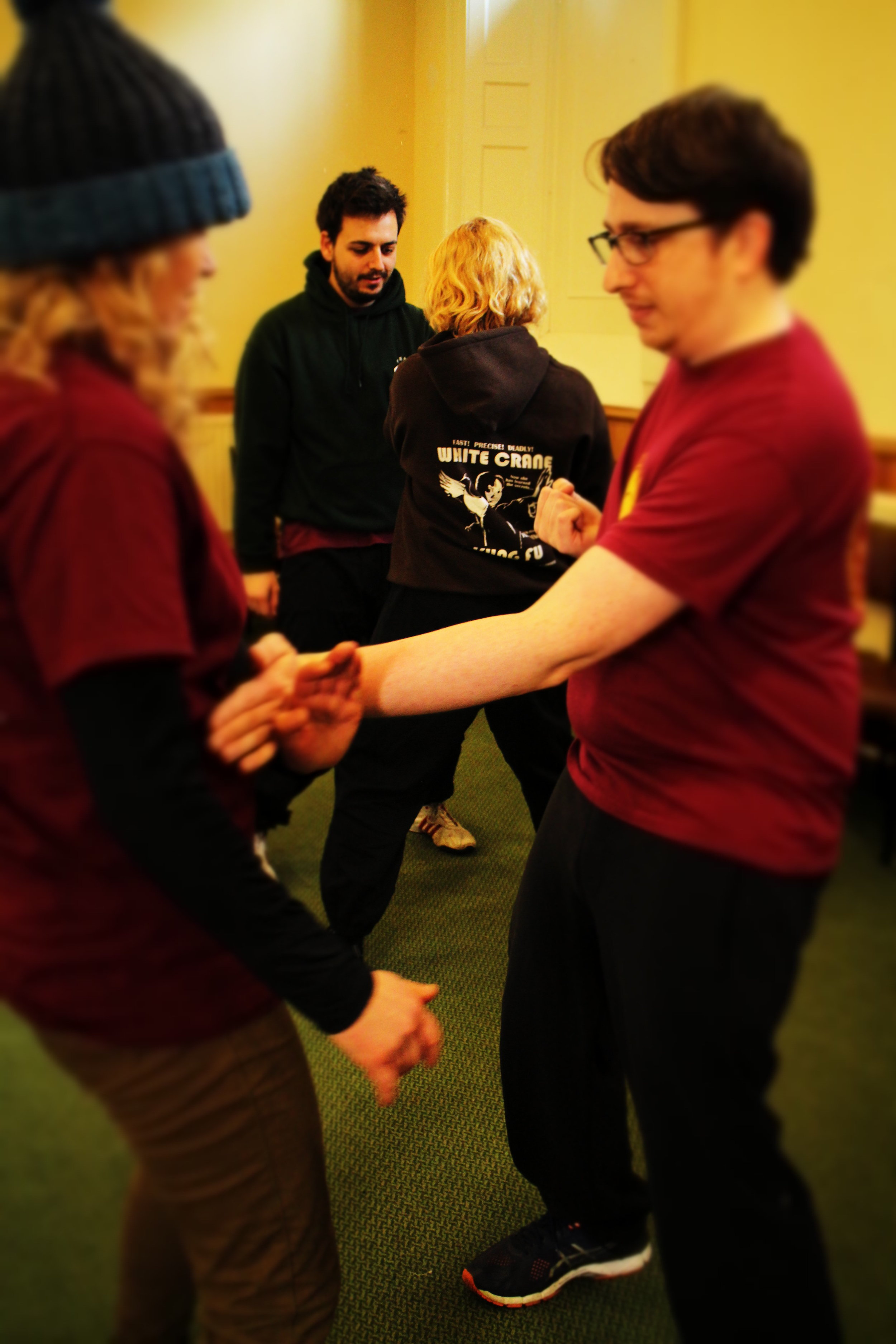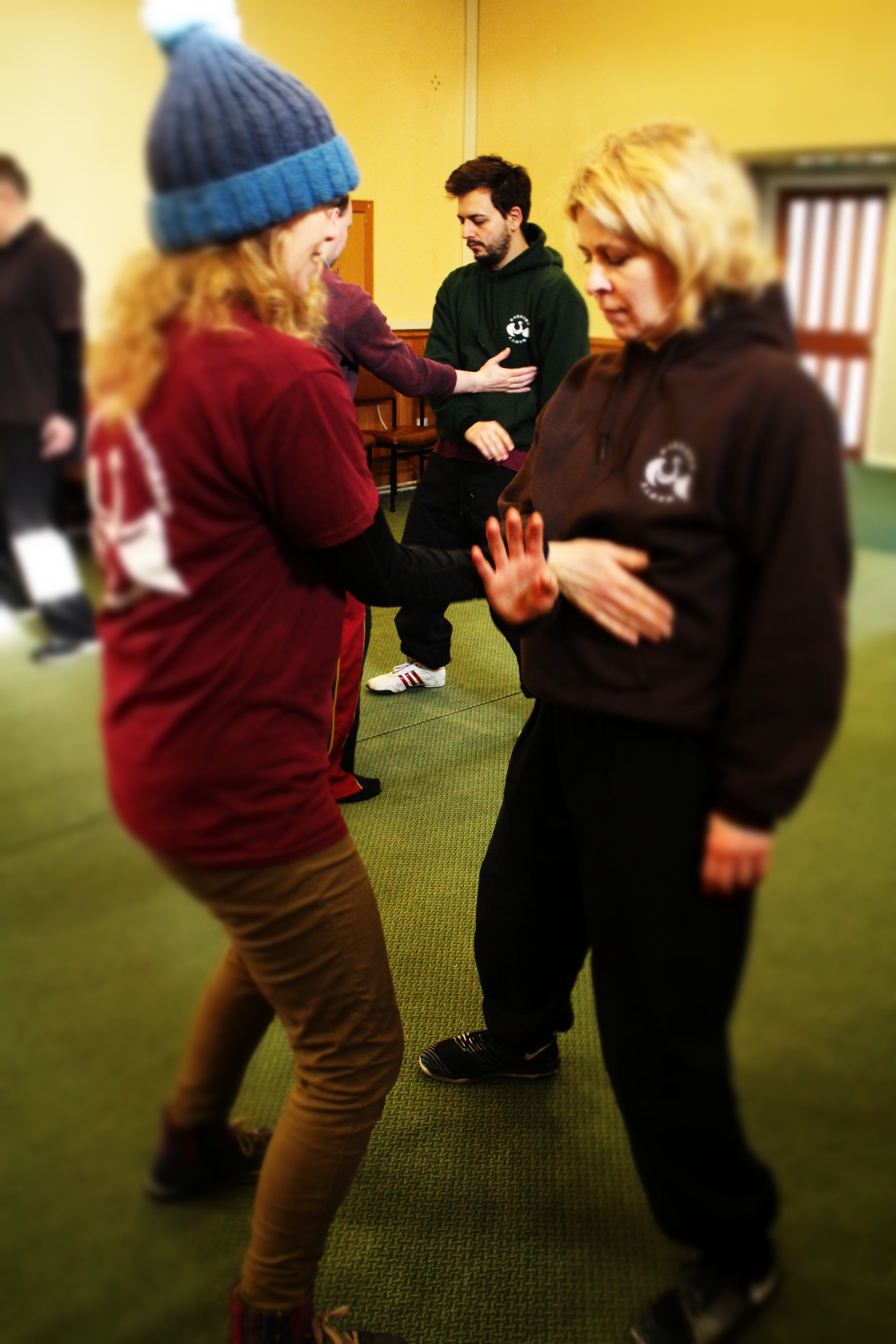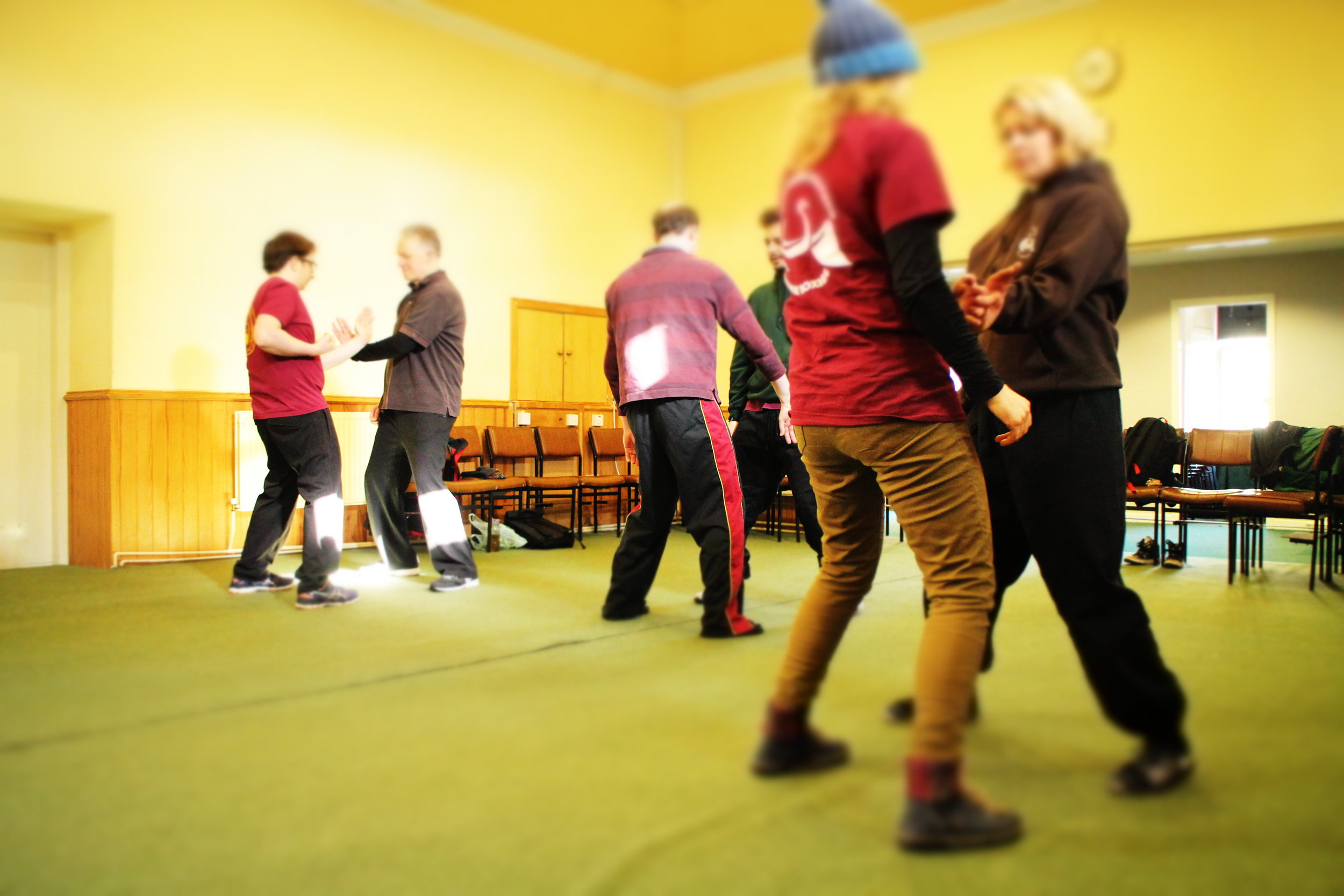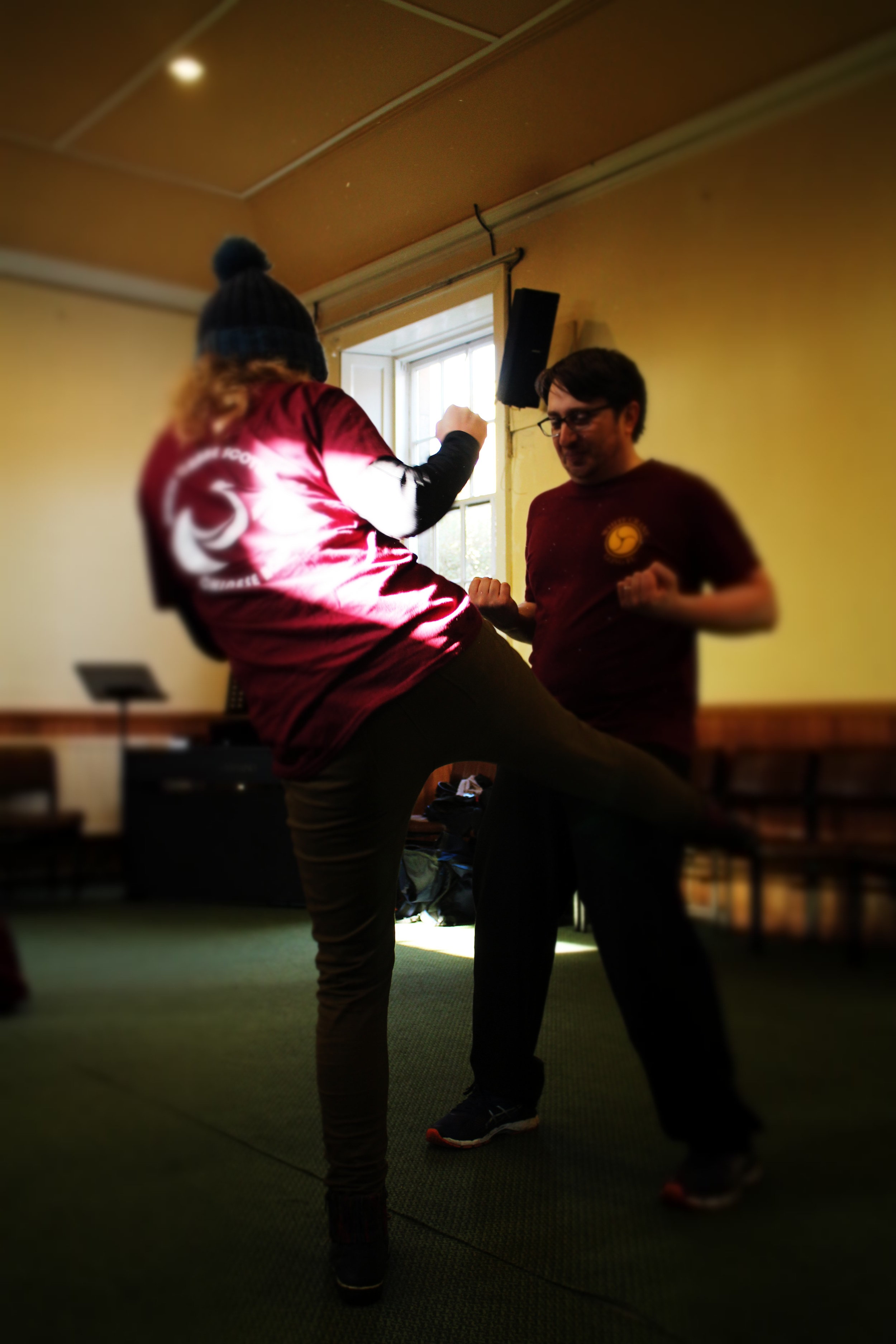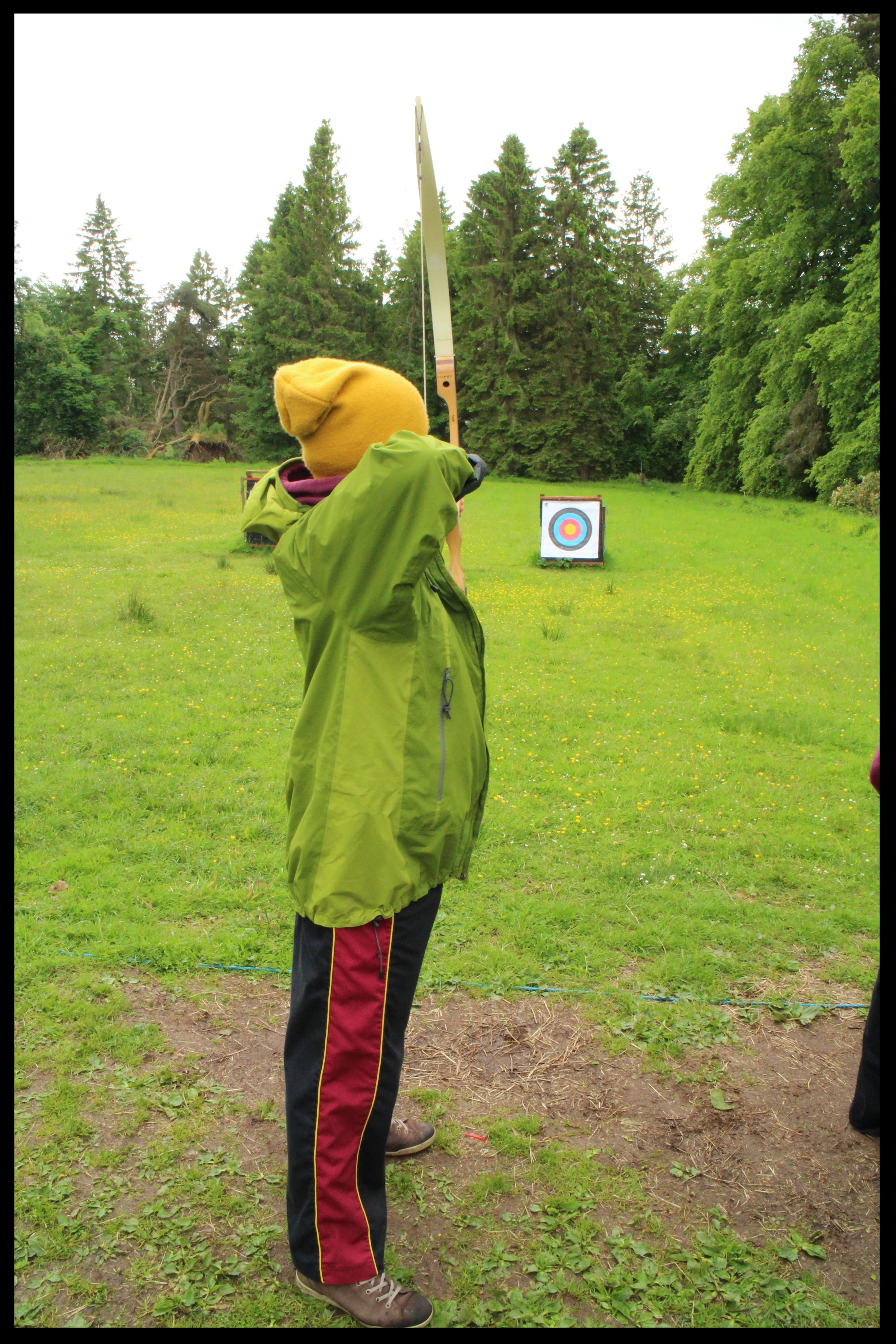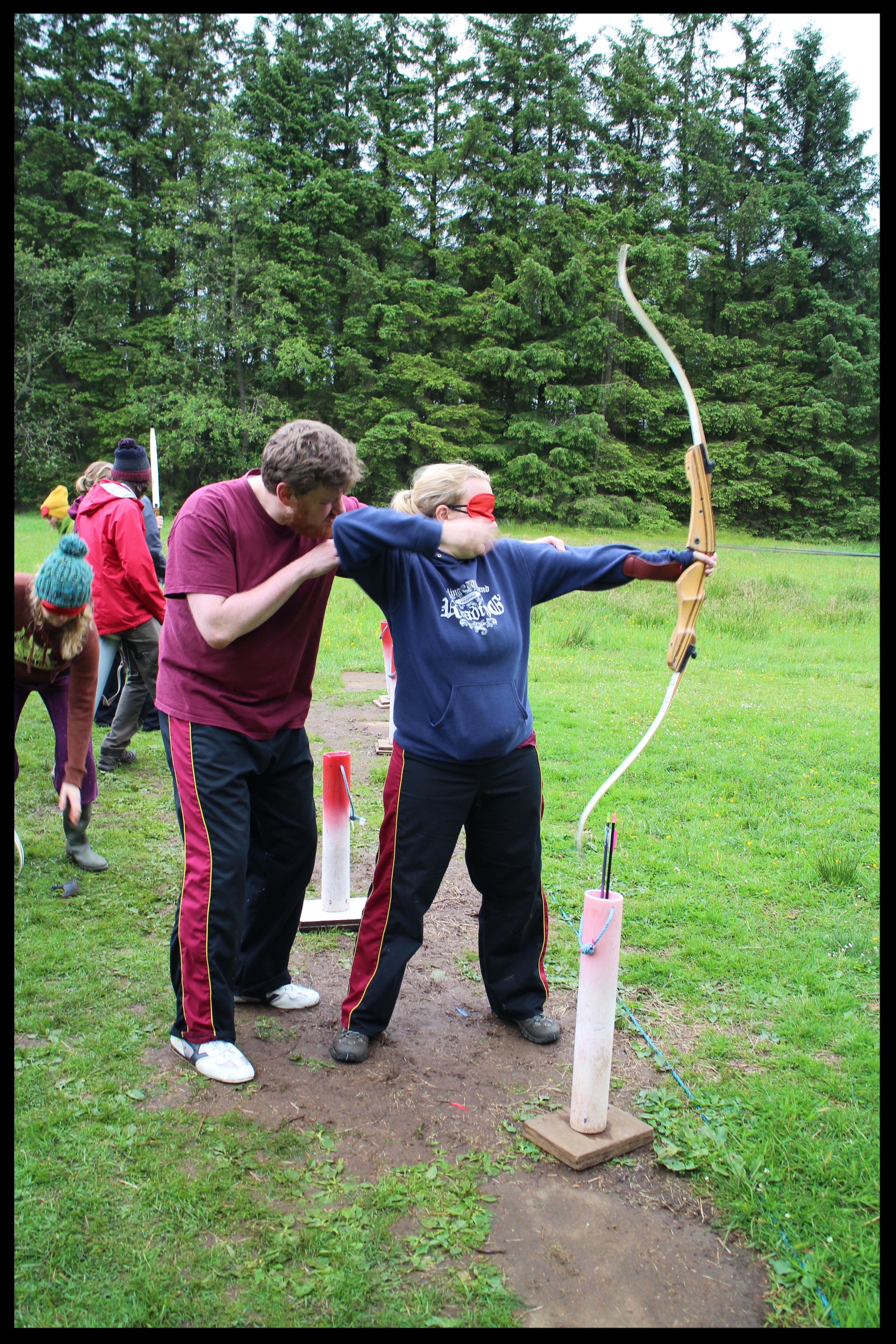Each year we offer weekend retreats and adventures built around white crane kung fu. With busy schedules and finding the perfect work/life/family balance it can be difficult for people to dedicate more than a few hours per week to training. Our weekend retreats therefore present a golden opportunity to escape to the Scottish countryside, switch the phone to bugger-off mode and divert ones attention solely to the practice of white crane.
2018 saw a return to basics with the intention diverted to the fundamentals of footwork and posture. These two points are often overlooked once a certain level of skill has been acquired with a sort of tick-box-move-on attitude. It is amazing how the position of the feet and legs will venture into interpretive realms if left unchecked, which is often the case as people become fixated with the upper body. This year we began with everyone being filmed performing San Zhan on their own phone, both to serve as a learning tool but as a useful progress marker to compare against in years to come.
Correct posture is crucial for the human body to work efficiently. Unfortunately as a society we have created environments that are perfect for causing problems for our posture. The human body is expert at adapting to new postures so it very quickly learns to accept poor positioning which often leads to in-balances and the common problems of back, neck and shoulder pain. The knock-on effect also changes the way in which we breathe, shifting the focus from the abdomen to the chest and shoulders.
Once we had established a base setting for our footwork and posture we were able to look more closely at the dynamics that are happening in these positions. It is fascinating that systems of movement that were created hundreds of years ago integrated muscle engagement in a way that has only been understood by science within the last 30 odd years. The process that I am referring to is the engagement of the core muscles.
Now I am sure that everyone is familiar with the term core muscles. There are endless videos titled forgotten core work or essential core training. And how many times have you heard someone say “engage your core”? However the next time someone asks you to engage your core please ask them which muscles they are referring to exactly. Most people think of the core muscles as a general group of muscles that make up the abdomen that you can work by doing planks and press-ups etc. This is misguided information based on outdated studies of biomechanics.
The core muscles are not the rectus abdominis (6 pack), internal obliques, external obliques or your love muscle(s). These are all muscles that are designed for movement rather than stabilisation. The core muscles are just 4 sets that extend beyond the abdomen and are unique because when they are engaged they do not actually move any part of the body, they are simply there to stabilise. This creates it’s own problems and one reason why there is so much misinformation out there. However it does present the question ‘if nothing moves when engaging the core then how do we know when we are engaging it?’.
This is where white crane enters the equation. By continuous practice of white crane postures and the correct focus of attention, the core will engage. To get the core to switch on is more of a mental game than a physical one. Once the core becomes engaged it is the difference between night and day. However without correct posture it will be impossible to engage the core. This is why when practicing forms it is crucial to be completely present. If your mind is not attentive to the fine details then then there is little point in practicing. Simply running through forms for the sake of repetition is not enough to progress and often merely reinforces bad habits.
On this year’s retreat everyone was lucky enough to have Sarah give an in-depth explanation of the core muscle groups, how they work and what they do. The information was invaluable. Practical exercises followed to help everyone grasp the concept and the correct sensations. Without someone with experience to guide you through these early stages it can be a bit like fumbling in the dark, not knowing which way you are facing or where you are when you get somewhere. At the end of the retreat progress was evident and the biggest rewards came from seeing the occasional aha moment.
Regardless of if you are a martial artist or a piss artist, engagement of the core is an essential component of efficient movement and good health. You body is like a puppy dog and your will power is its trainer. Like a young dog the body will do as it pleases, seeking the laziest ways to behave and not knowing the difference between good and bad. It will constantly test you to try and get its own way. The only way to get it to behave is through constant and diligent training. Do not let your body establish itself as the pack leader, take control today as learned bad behaviour can very very hard to break. It is your responsibility to do your own research and find a good teacher. Question everything and do not accept mysticism as an answer.
